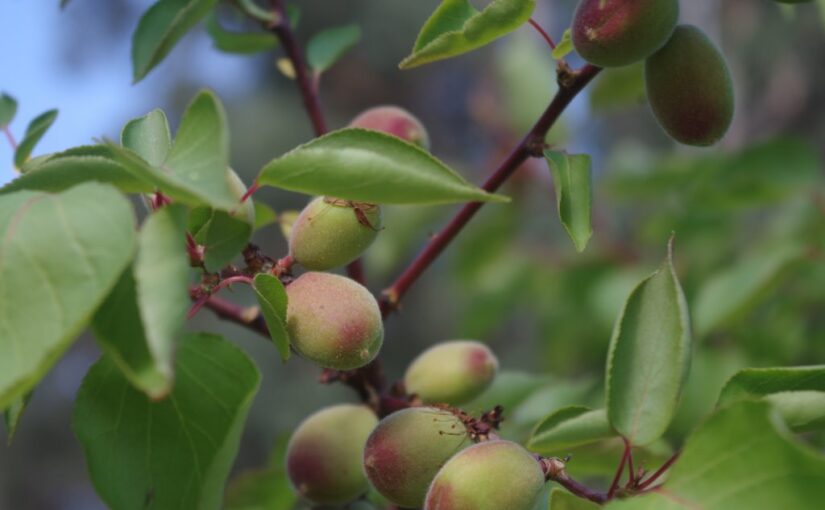Please state the nature of the caffeine emergency! The water pump suddenly dying on the fifteen year old coffee machine is a bit of a show stopper for a morning coffee! I’d call that a caffeine emergency! The machine has had more repairs to it over the years than the metaphorical granddads old axe. The story about the old axe was that the handle and head had been replaced heaps of times, and the irony was that it was granddads axe in name only. The coffee machine is getting a bit like that.
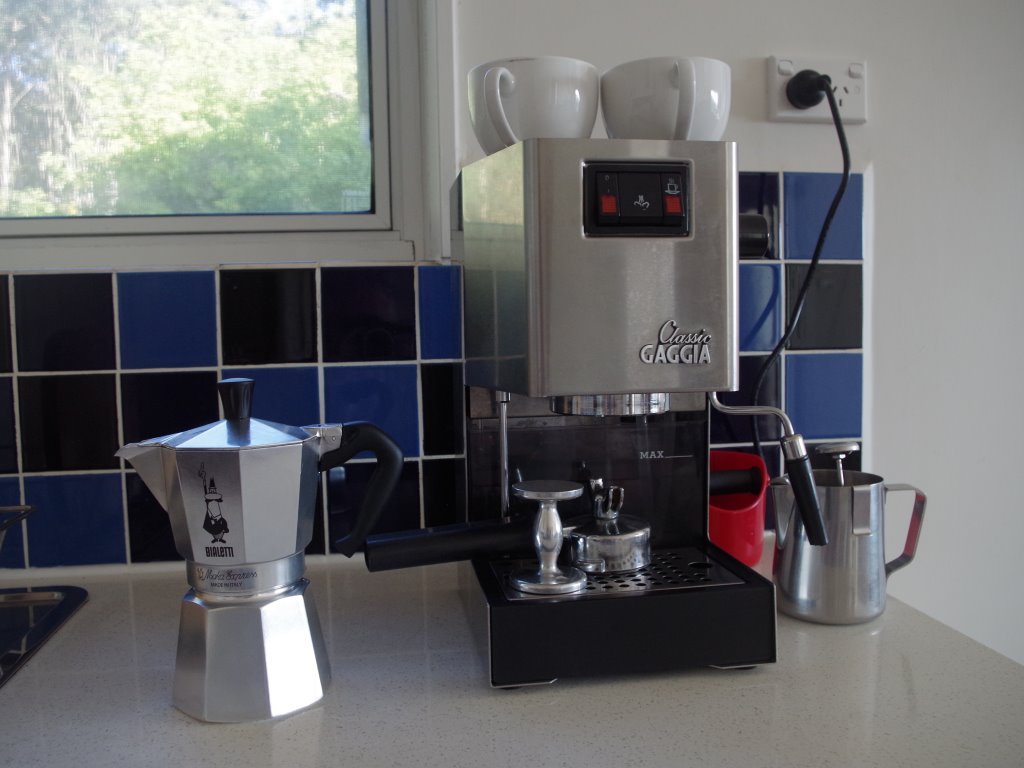
I love the smell of coffee in the morning! With the machine now dead, we had to resort to the plan B device: The Bialetti Moka Express. It makes a good coffee and is a super simple device, but the end product is no espresso, like the now dead machine makes. Except that dead machine wasn’t making any coffees, what with it not working and stuff. A blokes gotta make do, if he wants his morning caffeine hit. A true hardship! Anyway, we’ve been here before with a dead coffee machine, and so can just adapt and make do. You could say that the plan B coffee emergency, has already been put to the test.
Friday morning, the problem with the machine was diagnosed, then we ordered a replacement water pump from a supplier of such parts who is in the next state immediately to the north. The machine is actually well designed, and has been in production for over forty years. All the components are modular, and it doesn’t take too much time or effort to swap out any old parts for replacements.
It was a bit of a surprise that the replacement water pump cost $60 though. To replace the machine itself would be around $800. Economics is always a factor in these sorts of decisions. The cynic in me knows that it would be very difficult to construct an equivalent machine using parts, for less than the retail price of a replacement machine.
Perhaps the message being sent by manufacturers to the general public with that, is that they’d much prefer if people purchased an entirely brand new machine. Fixing an older used machine is an expensive proposition. However, it’s equally possible that the machines are sold for low profit margins just so that the manufacturer can make heaps of profit on the spare parts. We’ll never really know, but there sure is a lot of waste out there.
The waste bothers me, but it is built into the arrangements of our civilisation. I recently re-read George Orwell’s book: “1984”. One of the core themes of the story was that the essential problem of over production, was solved by constant warfare and absurd levels of control over most aspects of that fictional society. It was a bit of nightmare story really. But then the waste and pollution we create as a civilisation is also a bit of nightmare story.
Makes a person wonder how long we can continue to produce waste on such a grand scale. It’s candidly hard to know, what with being a prediction about the future and stuff. The dark horse in the waste story to my mind is the cost of energy, and particularly oil, which is hovering around the $95/barrel, last I checked. Historically, that’s expensive for a barrel of oil. Here’s a chart for the price of oil from 1950 to today.

My personal experience suggests that every time the price of oil spikes, we have an economic recession. Slowly afterwards, the price crashes due to the massive demand destruction – lot’s of people go broke in recessions and are suddenly unable to purchase things. The mid to late 1970’s was a period of general economic hardship. The price spike in the 1990’s affected both Sandra and I. We were separately made redundant by our employers and had to scramble to keep a roof over our heads and food upon the table. 2008 shows up in the graph, readers may recall those days. And we’re sort of beginning to edge back into that general high price territory again.
The good news is that during an economic recession, the overall waste our civilisation produces, reduces. Mostly this is because people can’t afford to be so wasteful. It amuses me to think back to the mid 1990’s when we sold a faded pink velour couch which was missing a leg and held up by a brick. Nowadays I would have at least repaired the missing leg. But in those economically challenging days, the couch sold, brick and all. That’s what not being wasteful looks like. And during such days, coffee machines would probably get repaired in preference to being junked.
The issue of waste has been on my mind this week, and it wasn’t only the coffee machine which triggered the thoughts. We’ve been setting up a new 600m2 (6,500ft2) combined citrus and vegetable enclosure. The enclosure is really to keep out the wallabies (a slightly smaller forest dwelling kangaroo). There are plenty of wallabies who enjoy the benefits of the well fertilised orchards and gardens here, but some of them are right little vandals.
Grafted citrus trees are deliberately short which makes them easier to pick, and an orchardist can plant more trees in a given area. Things were not always thus, because when I was a child, I recall my grandmother having a lemon tree in her backyard that was so huge, you could climb it. But usually citrus trees are much smaller these days. And that is a problem because wallabies are vandals and they love smaller trees.

So fencing excludes the wallabies from the area where the majority of the citrus trees are planted. It’s a big area, and requires 100m (330ft) of fencing. Rather than buying all new materials, we decided to use some of the scrap materials we had. Most of the timber posts were recycled. And all of the chicken wire used in the fencing was recycled. It’s strong stuff, being a heavy gauge wire, and was originally used to keep the wallabies from destroying the hundreds of fruit trees here. I’m sensing a pattern!
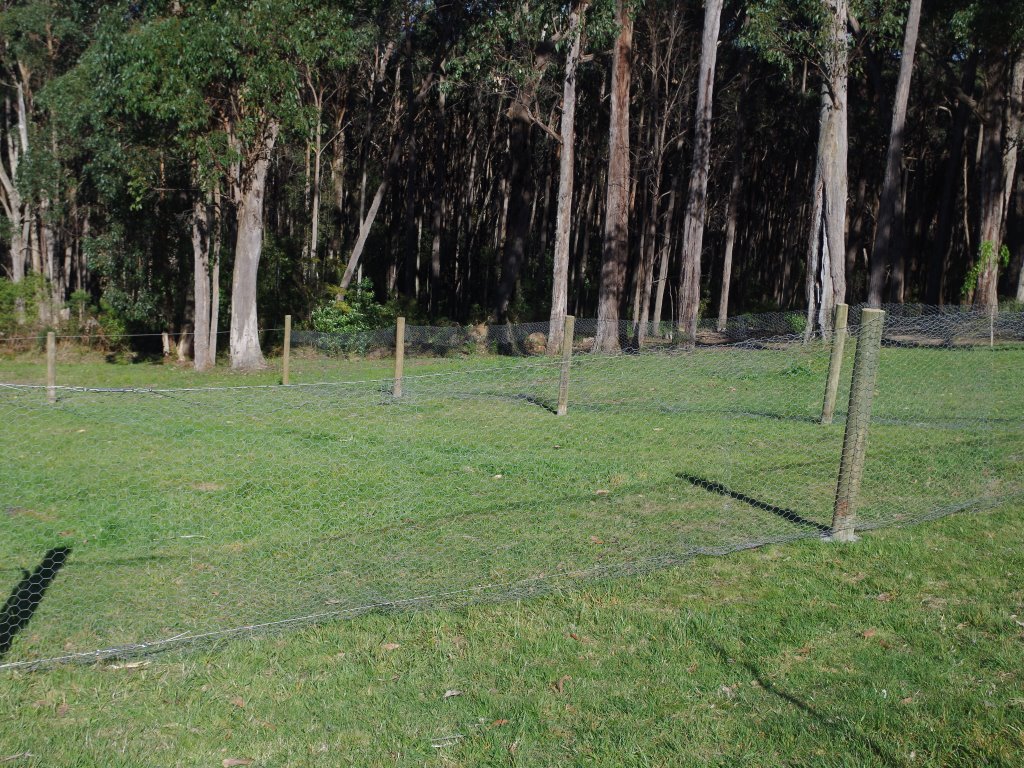
A very strong wire runs both top and bottom, and at the moment the chicken wire wraps around these wires. Eventually there will be two steel star pickets between each timber post. That arrangement should be sturdy enough to keep out even the most determined wallaby.
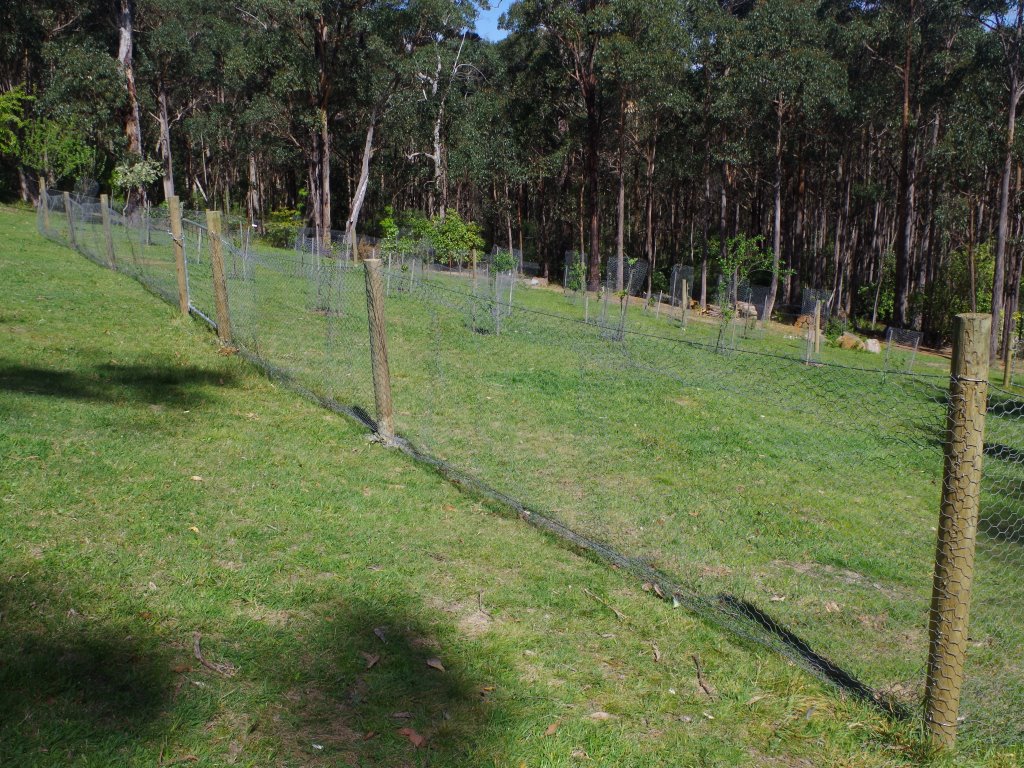
There are still a couple of days of work to complete the enclosure. Right now, the chicken wire fencing is only three quarters complete. It would have been much quicker and easier to have used all new materials, but that would be wasteful.
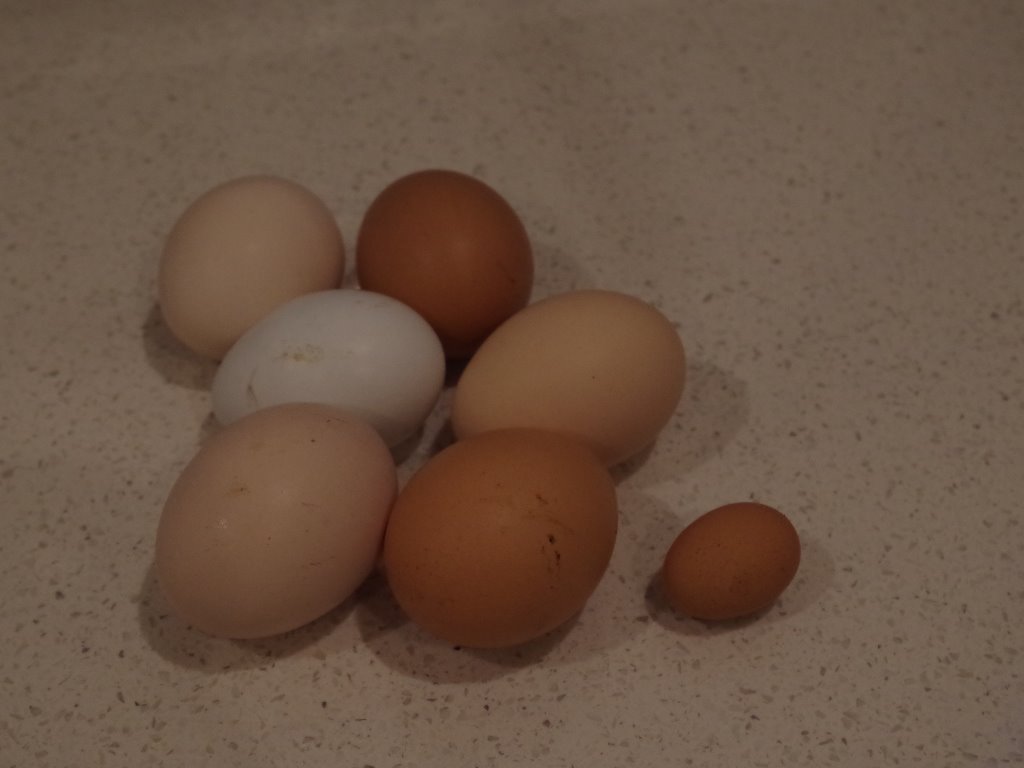
As long as the chickens don’t do anything stupid, like eating eggs, they get to happily live out a comfortable retirement after their egg laying days are done. In the above photo a 13 year old Silky chicken laid that tiny egg, which was fed to Dame Plum. I used to know a lady who kept chickens for their eggs, and at the end of every year she killed them all, and ordered replacements. And no, the lady did not eat the chickens. Talk about wasteful.
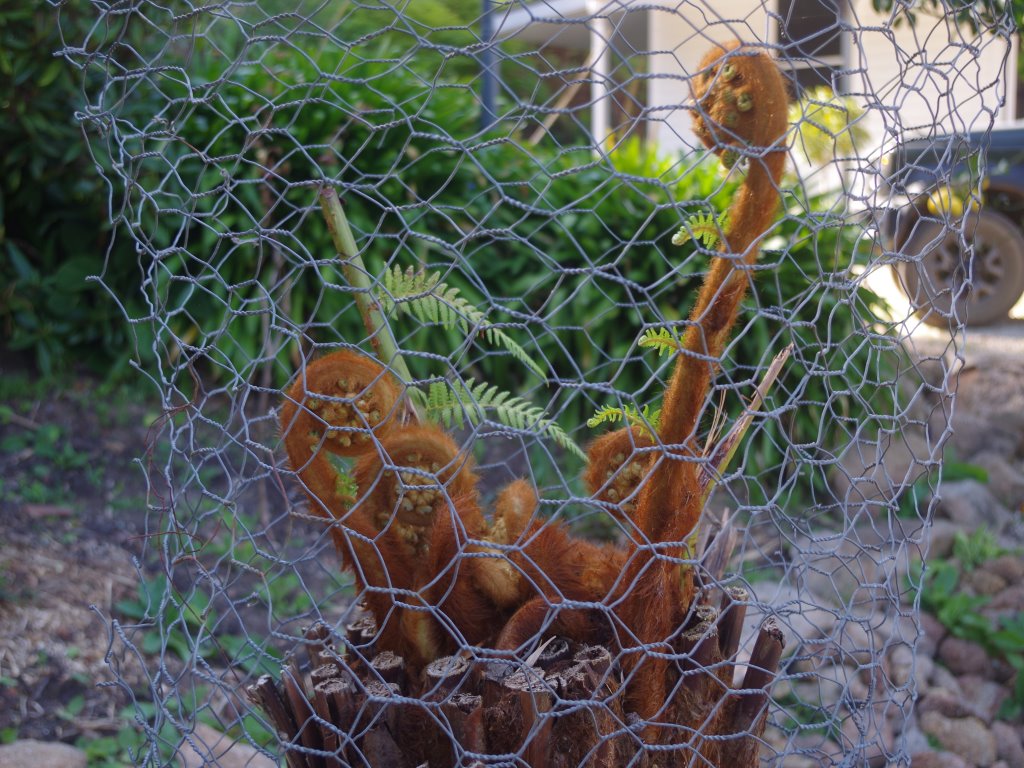
The weather during the past couple of weeks has been glorious. At this stage of the season there is still a lot of groundwater, and the extra heat is causing many of the plants to grow strongly. The tree fern was vandalised by an itinerant family of Sulphur Crested Cockatoos a few months ago, and we had to cover what remained of the plant with chicken wire so as to protect the newly developing fronds from further outrages. The tree fern has recovered and is now producing many new fronds. We removed the protective chicken wire today.
The extra warmth and energy from the sun really has been something of a boon to the orchards. The shady orchard has sprung into life:
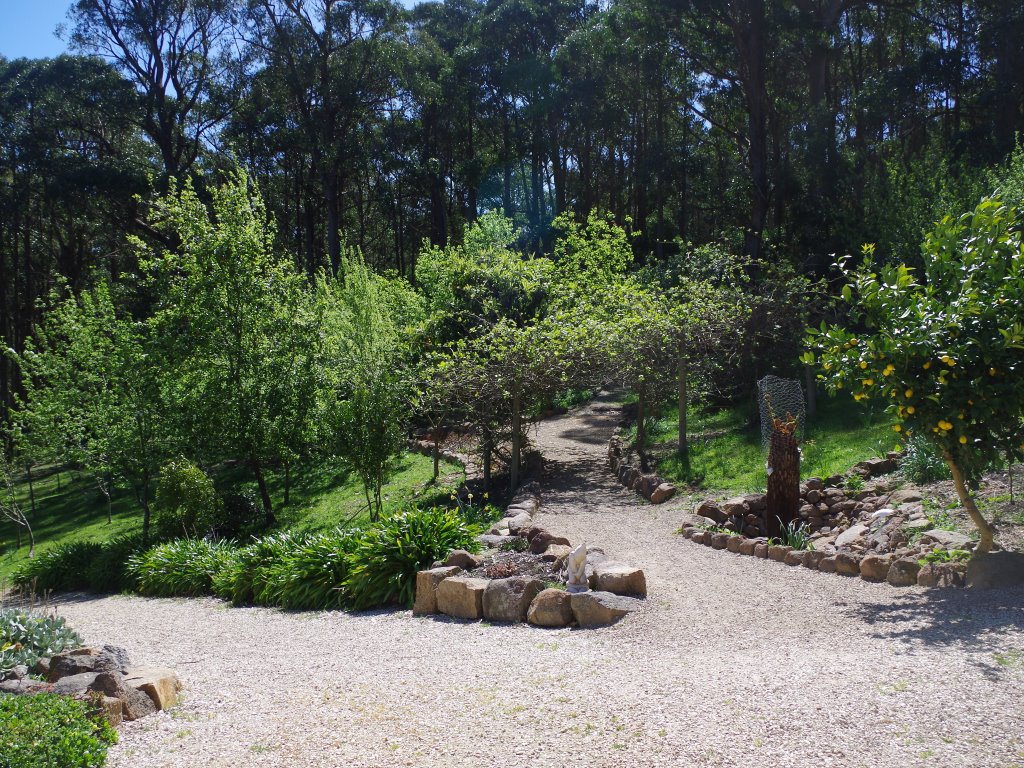
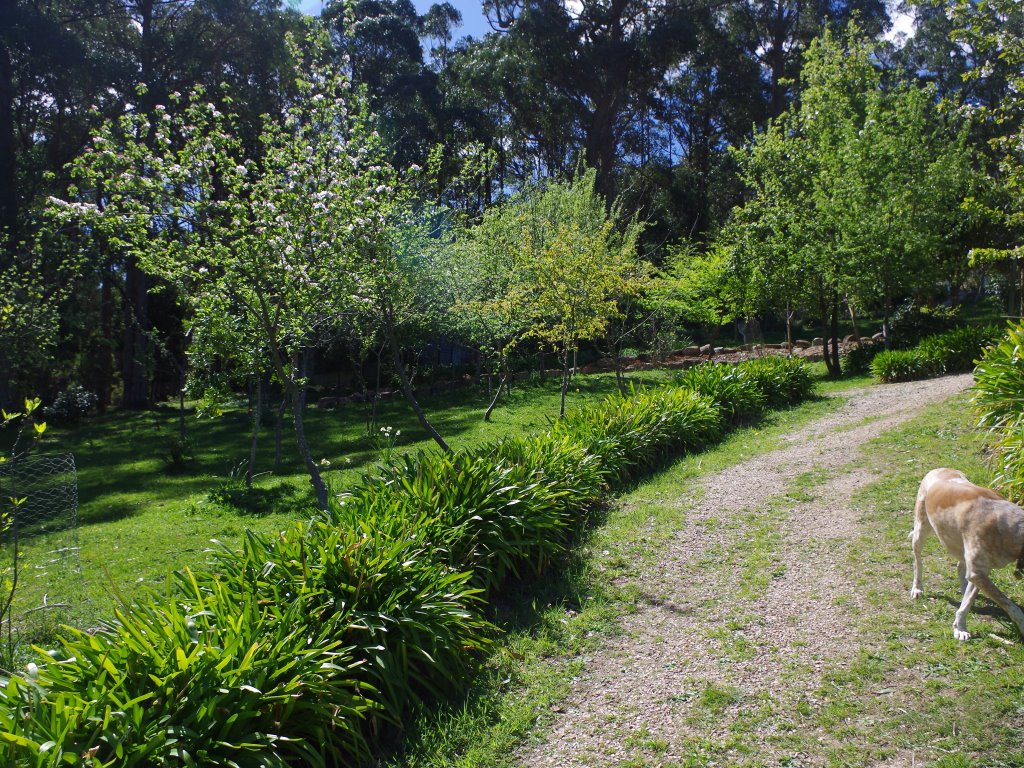
And in the more sunny orchard, the trees are likewise enjoying the suns warmth.

The Asparagus in the three raised garden beds are growing spears faster than we can eat them. And they’re very tasty.

There’s no shortage of leafy greens to consume either. The greenhouse has been in use for just over a year now, and the building is a real game changer for us.

We now also use the greenhouse so as to raise all of our seedlings. The seedlings are germinated in long forestry tubes so that we don’t disturb the root systems of the plants so much when they are eventually planted outdoors.
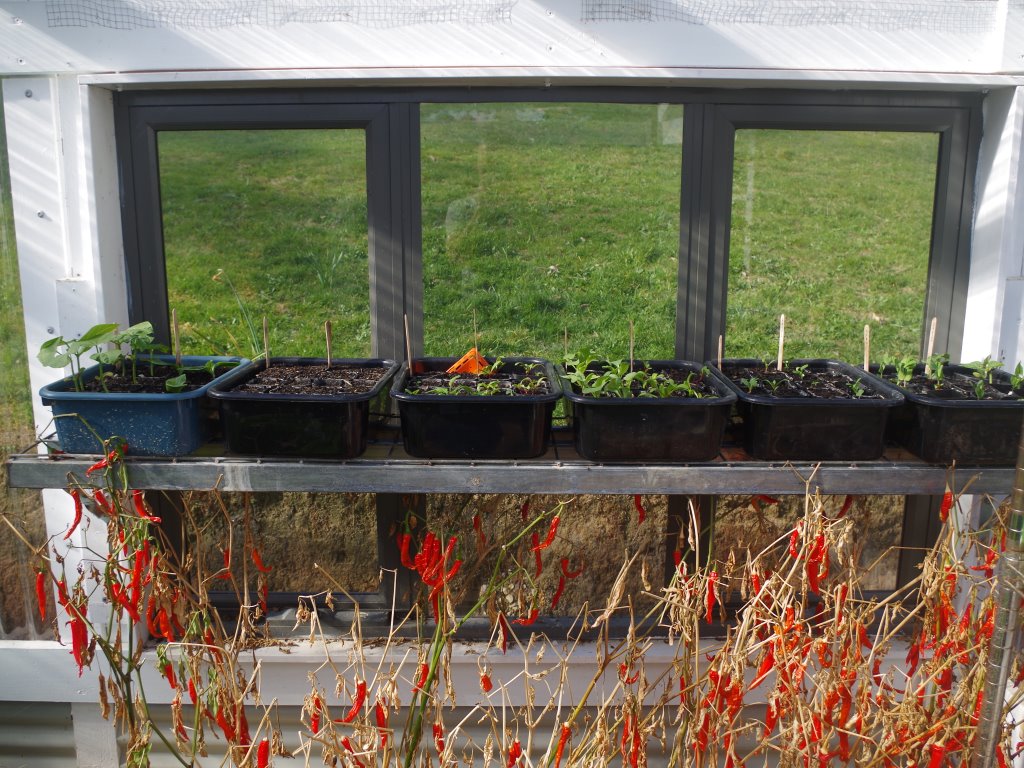
Unlike the past three cold and wet growing seasons, there are early signs that it may be a good stone fruit season.



Onto the flowers:

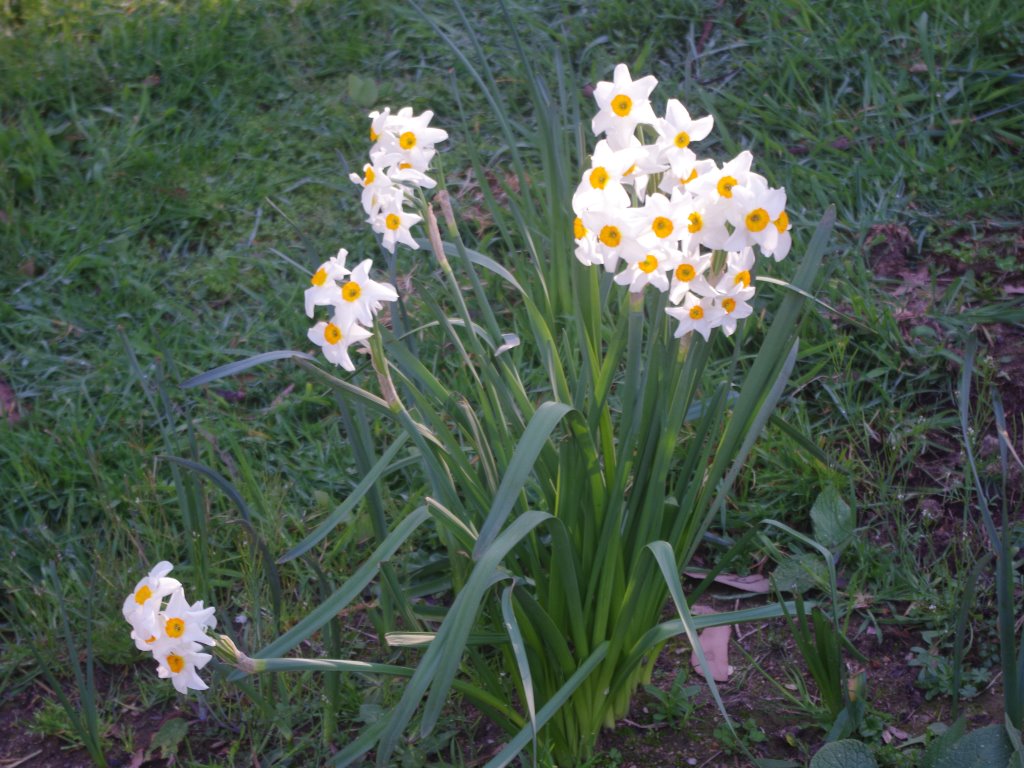
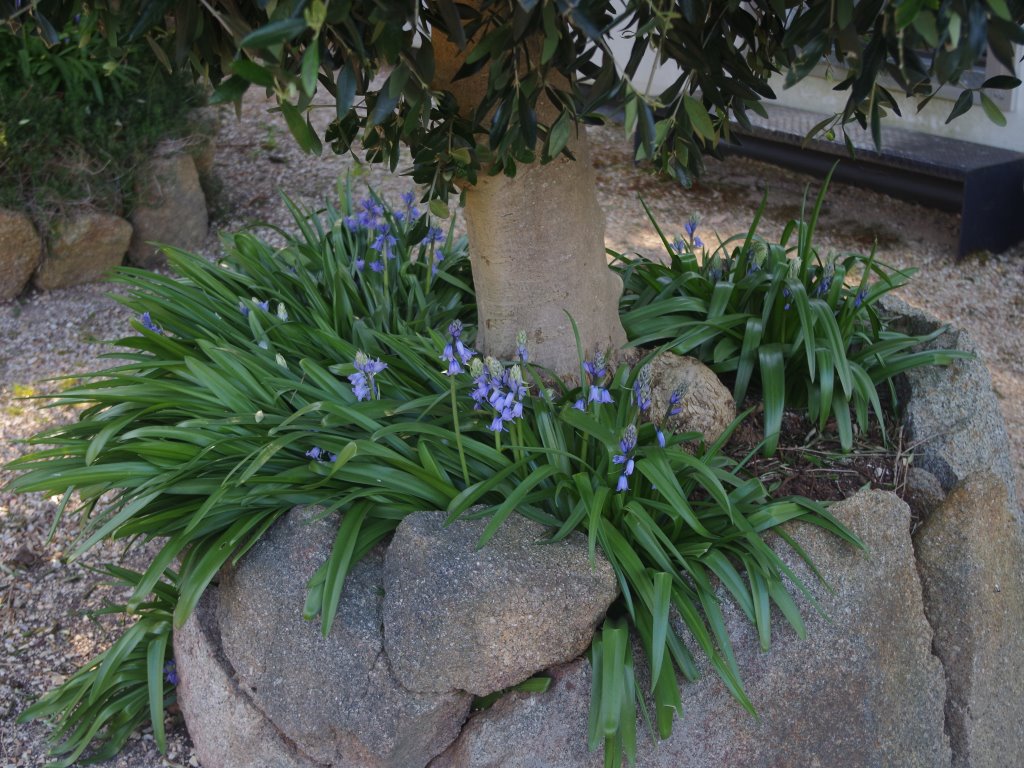
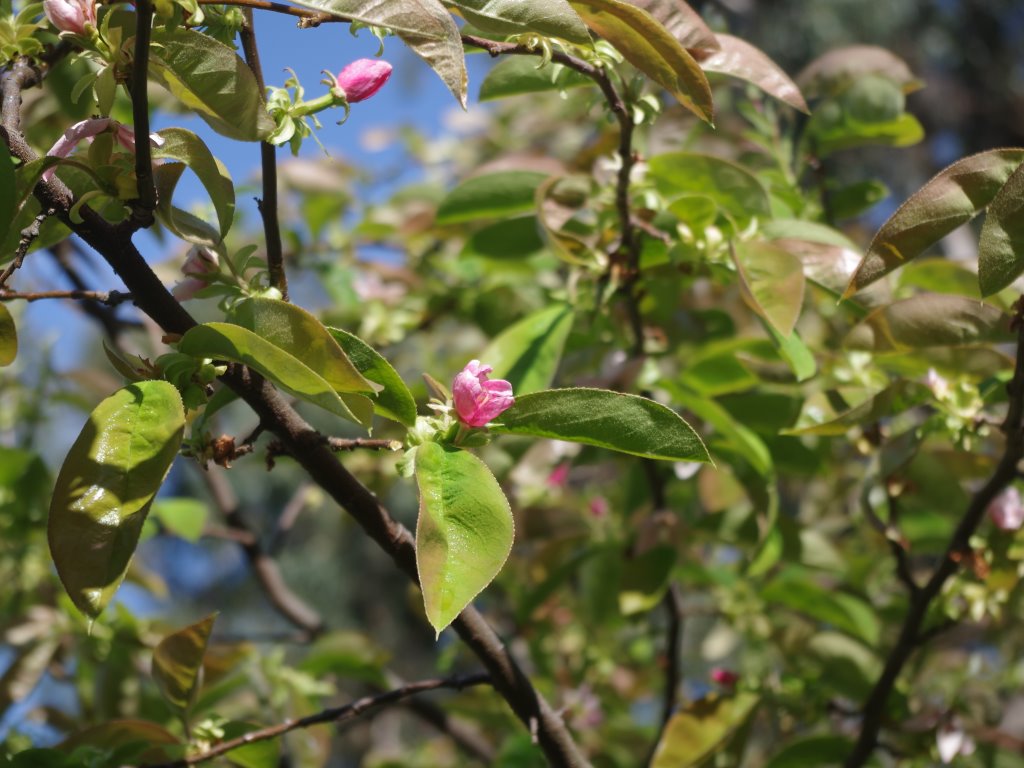
The temperature outside now at about 10am is 12’C (54’F). So far this year there has been 651.4mm (25.6 inches) which is up from last weeks total of 649.8mm (25.6 inches)
